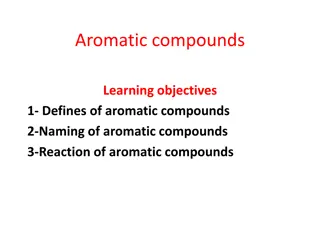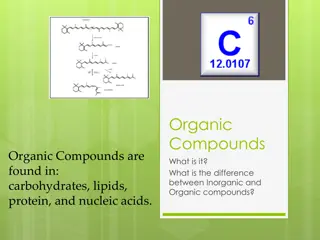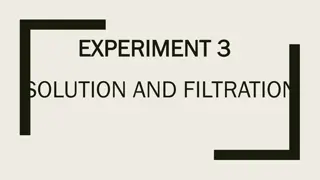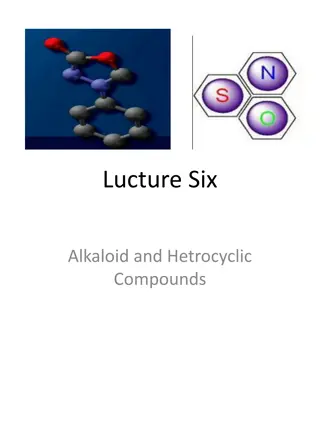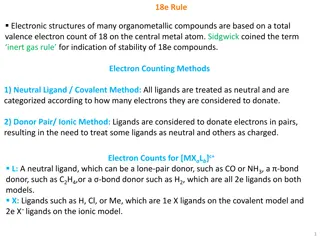Understanding Organometallic Compounds and Their Applications
Organometallic compounds are compounds with a bond between a metallic element and a carbon atom from an organic molecule. They have diverse properties and applications, ranging from being toxic to facilitating commercial chemical reactions. Learn more about their preparation, properties, and various applications in industry and research.
Download Presentation

Please find below an Image/Link to download the presentation.
The content on the website is provided AS IS for your information and personal use only. It may not be sold, licensed, or shared on other websites without obtaining consent from the author. Download presentation by click this link. If you encounter any issues during the download, it is possible that the publisher has removed the file from their server.
E N D
Presentation Transcript
Organometallic Organometallic Compounds Compounds Md. A. K. Azad Lecturer Department of Pharmacy Daffodil International University Md. A. K. Azad Lecturer Department of Pharmacy Daffodil International University
Organometallic Organometallic C Compounds ompounds Organometallic compounds which contain between a metallic element and a carbon atom belonging to an organic molecule. compounds are chemical at least one bond Even metalloid elements such as silicon, tin, and boron are known to form organometallic compounds which are used in some industrial chemical & medicinal reactions.
Properties of Properties of Organometallic Organometallic C Compounds ompounds The bond between the metal and the carbon atom is often highly covalent in nature. Most of the organometallic compounds exist in solid states, especially the compounds in which the hydrocarbon groups are aromatic or have a ring structure. The compounds consisting of highly electropositive metals such as sodium or lithium are very volatile and can undergo spontaneous combustion. In many cases, organometallic compounds are found to be toxic to humans (especially the compounds that are volatilein nature). These compounds can act as compounds formed by highly electropositivemetals. reducing agents, especially the The other based on the properties of the metals that constitutethem. properties of organometallic compounds differ amongst each
Applications of Applications of Organometallic Organometallic C Compounds ompounds In some of the commercial chemical reactions, organometallic compounds are used as homogeneous catalysts. These compounds are used as stoichiometric reagents in both industrial and research- oriented chemical reactions. These compounds are also used in the manufacture of some of the semiconductors, which require the use of compounds such as trimethylgallium, trimethylaluminum, trimethylindium,and trimethyl antimony. They are also used in the production of light emitting diodes (or LEDs). These compounds are employed in bulk hydrogenation processes such as the production of margarine. These compounds are used as catalysts and reagents during the synthesis of some organic compounds. The complexes formed from organometallic compounds are useful in the facilitation of the synthesis of many organic compounds.
Preparation of Preparation of Organo Organolithium lithium C Compounds ompounds
Preparation of Preparation of Organo Organomagnesium magnesium C Compounds ompounds
Preparation of Preparation of Organo Organozinc zinc C Compounds ompounds Diiodomethane Zinc-copper couple Iodomethylzinc iodide
Preparation of Preparation of Organo Organocadmium cadmium C Compounds ompounds
Preparation of Preparation of Organo Organocopper copperC Compounds ompounds Phenyl magnesium bromide Phenyl copper




